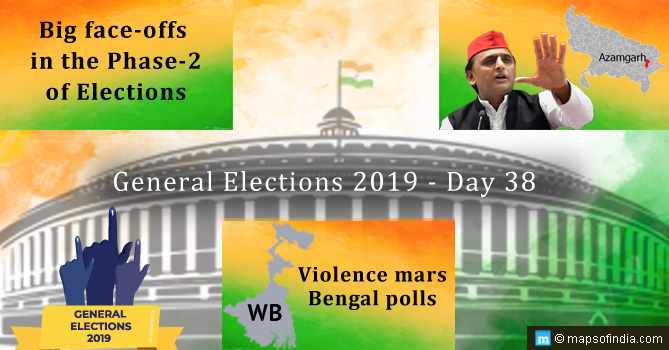The 15th edition of the annual meeting of the Russia-India-China (RIC) group took off in New Delhi this morning. The meeting assumes great significance when viewed in the context of a world in which the countries from the Asia Pacific region are gaining greater economic and political clout each passing year. Russian Foreign Minister Sergei Lavrov and Chinese Foreign Minister Wang Yi are attending the meeting with their Indian counterpart, External Affairs Minister Sushma Swaraj. Previously, the Indian government had issued a statement that said, “The meeting is expected to review global and regional issues of mutual interest as well as discuss trilateral exchanges and activities. A joint communiqué is expected to be released following the meeting.”
The three foreign ministers had previously attended the 2016 RIC meeting hosted by Moscow and also the 2015 RIC meeting held in Beijing. The current RIC meeting was to be held in April but was postponed due to Beijing’s displeasure over Dalai Lama’s visit to Arunachal Pradesh which China claims as its own territory.
What’s the Agenda?
Countering global security threats in the form of terrorism is likely to top the agenda of this meeting between the representatives of India, China, and Russia. In recent years, the differences between India and China have escalated and we may expect some of these to be resolved during the tri-nation talks. The three foreign ministers will also be exploring various possibilities of cooperation between the nations in various regional and global fora. The three nations are likely to issue a joint communiqué by the end of the meeting.
The Chinese and the Russian foreign ministers are both expected to individually hold bilateral talks with India on the sidelines of the ongoing RIC meeting.
India China Bilateral Meetings
Chinese Foreign Minister Wang Yi’s visit comes at an important time for both countries. The bilateral meetings to be held between Ms. Sushma Swaraj and Mr. Wang Yi present the perfect opportunity for the countries to work through the bitterness caused by the 73 day long military standoff in the Doklam plateau in Bhutan. The Doklam standoff had the potential to quickly escalate into full scale war but was averted by prudent diplomacy on the part of these two Asian neighbours. Last week, Wang had said, “China and India have far greater shared strategic interests than differences, and far greater needs for cooperation than partial friction.”
Following closely on the heels of the RIC meet, the two countries are likely to resolve much of the longstanding border disputes during the visit of Chinese diplomat Yang Jiechi. The 20th edition of China-India boundary talks (India-China Special Representatives’ talks) will be held between Yang and National Security Advisor (NSA) Ajit Doval.
India and China are both global manufacturing hubs and the RIC meeting presents a favourable setting for the two nations to explore greater levels of economic cooperation. China’s mention of the “prospect of the dragon and the elephant dancing together” bodes well for both the countries.
Can India Count on Russia’s Support?
Back during the post-Cold War days, India and Russia had developed very close ties and were generally considered to be close allies. This bond, however, has been under stress over the past decade given India’s growing proximity with the US. The RIC meet shall provide India the platform to enlist Russia’s support in various matters of bilateral and global concern. The most important among these will be India’s candidacy for a permanent seat at the United Nations Security Council. India will also need Russia’s support in its bid to gain entry into the Nuclear Suppliers Group.
India’s Pursuit of Multilateral Ties
The Russia – India – China (RIC) triangle meet is in its 15th edition but is gaining importance in the context of India’s pursuit of strategic multilateral ties. Last month, India was part of the revival of the Quadrilateral of democracies (the United States, Australia, Japan, and India), launched from Manila. Apart from the BRICS (Brazil, Russia, India, China, South Africa), our nation is now part of many such multilateral agreements that have given a boost to the country’s economic agenda and cemented bonds of cooperation on various fronts. The BRICS and the RIC along with the SAARC have brought India’s role in regional dynamics into sharp focus.
Taken together, the meeting of the Quadrilateral of democracies last month and the RIC meet now, only point to the increasing importance of the Indo-Pacific region and the countries in this region in global matters.





